We occasionally link to goods offered by vendors to help the reader find relevant products. Some of these may be affiliate based, meaning we earn small commissions (at no additional cost to you) if items are purchased. Here is more about what we do.
Lynne liked my last article, comparing cast iron and copper cookware, so much that she asked me to write another comparing cast iron vs carbon steel frying pans.
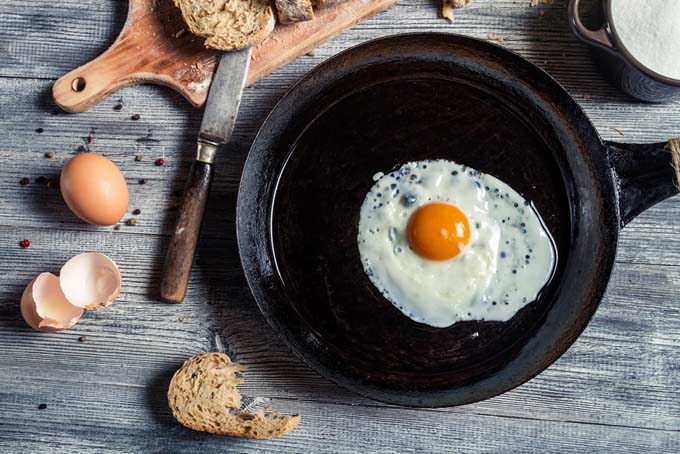
Until the mid-twentieth century, cast iron cookware was just about the only variety you would find in most American kitchens
Okay, yes, this was largely due to the reality that it was pretty much the only worthwhile option for the common folk, but its sturdiness and heat retention means it has always been and remains an excellent choice for cooking up just about anything.
By the 1960s, Teflon and other nonstick skillets gained popularity and had essentially taken over the cookware world until the early 2000s, when more traditional cooking vessels like cast iron and ceramic started making a comeback into the mainstream.
After living in a world of fast food and microwave dinners, many people decided to get back to their roots and throw out all Teflon and prepare real food from scratch.
It’s been found that Teflon and other nonstick products can leach chemicals into food and the coating can be toxic at high temperatures (above 500°F). You also don’t generally have the option of going stove-top-to-oven with nonstick cookware.
With natural materials like cast iron and carbon steel, there aren’t these kinds of problems, making them excellent options for home chefs who want multipurpose cookware and who want a healthier lifestyle.
Both of these metals form a key choice when comparing natural cookware options and you’ll find classic skillets made of both materials. While cast products are certainly better-known, carbon steel (known best for its use in woks) can do nearly everything its sister can do without some of the drawbacks.
A good argument can be made for buying either! And both work great on inductions stoves so you’ll definitely be future proofed.
Iron is actually a relatively poor heat conductor in comparison to other metals like copper. But once it heats up, it maintains temperature, can withstand very high temperatures, and spreads heat evenly without any hot or cold spots.
This makes this thicker metal is a great option for searing and giving color to meat, like steak, because the surface of the skillet isn’t going to change temperature once you’ve placed the cold meat in the pan. Check out Foodal’s recommended skillets and pans for searing steak and other cuts of meat.
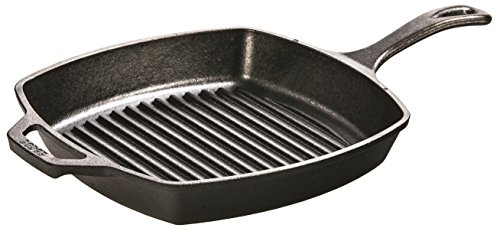
Want a more grill like surface to sear on? Try a Lodge 10 1/2 in Pre-Seasoned Cast-Iron Square Grill Pan for under $20!
In addition, because cast does just fine in the oven, you can use that very same pan to bake a pineapple upside down cake. The downside is that they do take some time to heat up and cool down, which can be annoying.
Conversely, this built in heat radiator effect can benefit you – especially when using a dutch oven to keep stews and other similar meals warm.
Carbon steel doesn’t retain heat quite as well, but most people say they don’t notice a significant difference and in return, your frying pans will heat up and cool down much more quickly.
Some users say that they find hot spots in their carbon steel frying pans, but this can be avoided by buying them a little thicker and from a reputable seller.
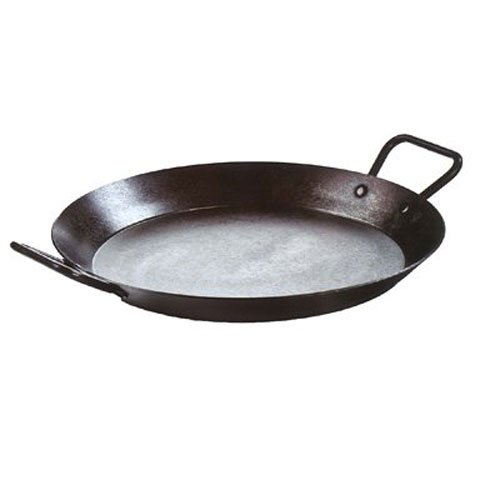
Need to feed a neighborhood or a small army? Then the Lodge CRS15 Pre-Seasoned 15-inch Carbon Steel Skillet may be just what you need!
Iron skillets are well known for their durability and are often passed down for generations, building an even better seasoning as time goes on. Carbon steel is also very durable; in fact, it’s less brittle than its counterpart, so there’s less risk of it breaking when dropped or smashed.
Both types of cookware require maintenance to make them last, though. This is done through a process called seasoning, which entails applying oil and baking the cookware.
Carbon steel skillets have a smoother surface, making them quite a bit easier to season. Just one application of oil should be enough to make them nonstick. Newer cast cooking vessels, however, hold their seasonings better because of their rougher texture.
This may not be the case if you are looking at pre-WWII US made examples which were ground smoother and a bit thinner.
Ultimately, cast iron may survive a bout with the occasional spaghetti sauce recipe or even submersion into soapy water while the acids in the food or a judicious soaping and scrubbing session would definitely strip the oil right off carbon steel cookware.
Most people who use iron skillets consider their heavy weight a fair trade off for such a sturdy product. What they don’t know is that carbon steel frying and sauté pans can be made at about two thirds the weight of cast iron ones, taking a substantial load off without sacrificing longevity.
Both materials have about the same density, but carbon steel frying pans are typically made thinner. Be careful, though: buy a product that’s too thin and you can find yourself with a warped skillet, a common complaint from users of cheaper carbon steel.
Pros and Cons of Carbon Steel and Cast Iron
| Low cost - even huge 16" frying pans (the biggest they make) are reasonably priced. | Lots of weight. Don't drop it on your toes! | Faster reaction to adjustment to heat (although not nearly that of copper or even aluminum). | About double the price of cast. |
| Natural non stick finish due to the cooking oil based seasoning. | Although very hard, the metal is somewhat brittle and can shatter if dropped on concrete. | Oil based, natural non stick finish. | Very cheap and very thin pans can bend - this is not the case with the brands I recommend. |
| Can keep your food warm for a long time. | Doesn't cool done nearly as fast as carbon steel skillets. | 1/2 to 2/3rds weight of iron (depends on thickness). | Can't handle repeated use with acidic foods or soap. |
| Induction ready. Models (Lodge) available that are made in the USA. | Handle can get extremely warm - use a dish towel or oven mitt to handle. Alternatively, use a silicon slip on handle holder. | Works superbly with Induction. Models available that are made in the USA and Western Europe. | Handle can get very hot - however, it is very easy to slip on a silicon handle cove. |
| Searing meat at high temperatures is not a problem. | Can't handle repeated use with acidic foods or soap. | If well treated, will last for years. | |
| Can go from stove top to oven due to their deep sauté pan like sides. Great for deep dish pizza. | Should last several lifetimes if it is used and not abused. | ||
| Deeper pores on the metal's surface allow the seasoning to stick really well. | Smaller pores make for very smooth surface. | ||
Both are ultimately very similar products. When it comes down to it, I think that an iron frying pan is the better bargain for my needs, but it’s a close call. Carbon steel sends to run about double the price of cast products.
The difference in weight and capacity to heat up and cool down more quickly aren’t quite worth the price to me, and I appreciate that cast iron skillets are a little lower maintenance and more traditional to the American kitchen.
However, example of both types of these pans are low enough cost (at least until you get into enameled examples) that they won’t break the bank and it may be worth it to add both to your arsenal – you may find that you prefer doing certain tasks more with one over the other.
We’ll get another take in an upcoming feature, when Lynne’s Kitchen contributor Ashley digs deeper into the saga of carbon steel. Until then you can read more about the various types of cookware available.
May your foodie dreams come true!
Chelsea
About Chelsea Miller
Chelsea Miller, born and raised in Portland, Oregon, graduated from the University of Oregon where she discovered both her love of football and cooking great food. She's the founder of the food blog "A Duck's Oven" and began writing for Foodal in 2014.


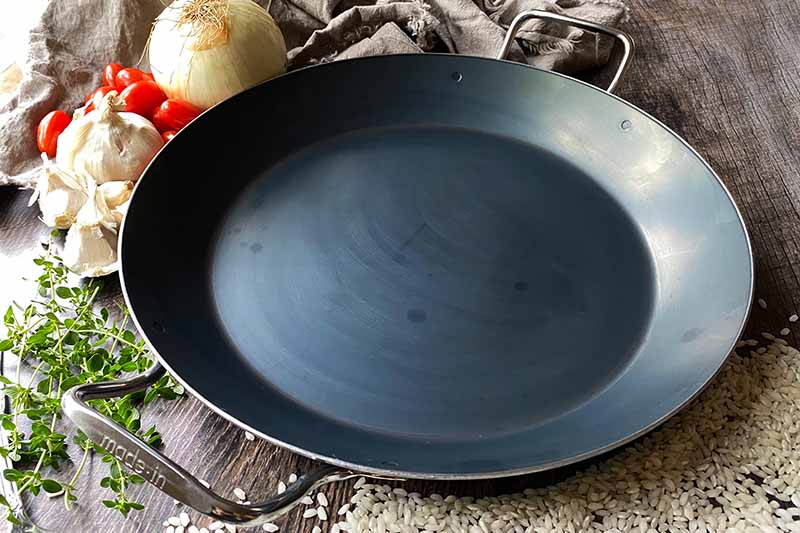
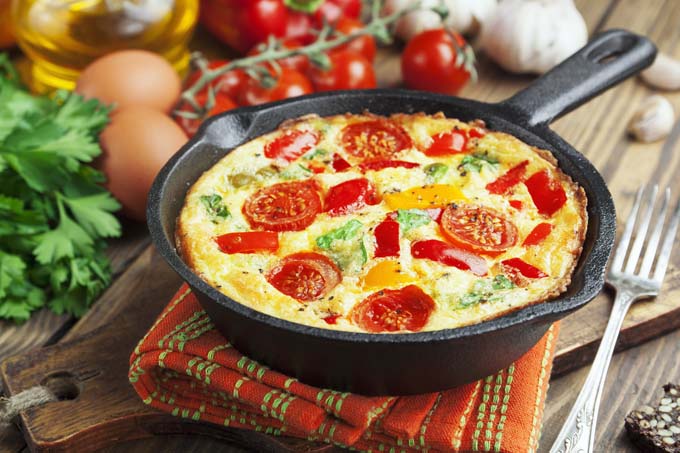
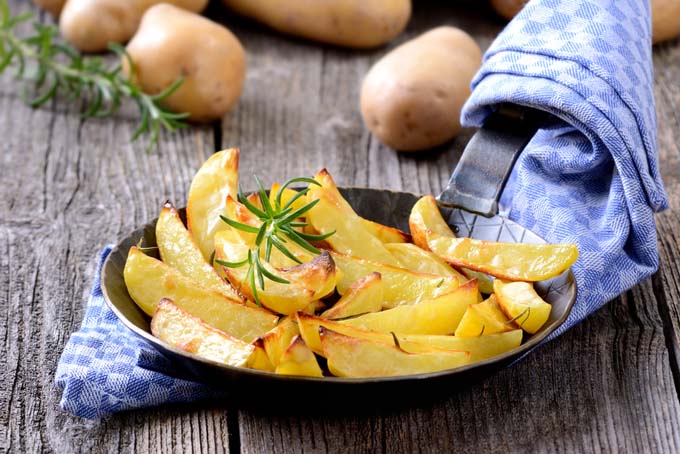
This was an extremely educating and helpful post 🙂
Yes, she did an awesome job of informing the uninformed. 🙂
Thank you for taking the time to write out all the pertinent information given here. It is very informative for the seasoned as well as amateur cooks. I for one have learned some things today.
This was actually a pretty bad article. One of the things to consider is cast-iron of the past with mixed with wrought-iron making it more flexible and was pretty much a high grade of cast iron and was polished. That nonsense about rough finish letting the seasoning attach better is just lie to get away without having to polish them that manufactures tell. Anyone with an antique cast iron pan knows it’s the very best cast-iron you can get. And the very best pan
Jonathan,
Not necessarily. Old cast iron came in about three variations and price points and could be ordered as such (albeit most were thinner castings): rough (same as today), milled, and milled and polished.
A milled and polished pan is painful to get a season to take. I have a 14 inch 3 notch lodge made in the 1930s that has never really taken a good season. It’s too damn slippery for the oil to grab onto.
The rougher castings are easier for a newbie to get a good season…but we can appreciate the craftsmanship that went into producing those polished examples from back when companies and consumers still gave a crap. And they likely make us FEEL better when using them…but they don’t really take a better seasoning.
And I prefer French made carbon steel pans today. A bit of the best of both. Lighter, a bit thinner (like the old cast), and a smoother finish without being polished. My two cents. YMMV.
I love my French carbon steel pans. I like my cast iron pans too, but I don’t use them as often.
The only thing that irks me about my cast iron pan is that I lose the seasoning when I wash it with soap. I find that the special care it needs to maintain a non-stick surface is too tedious for daily use. That said, I still break it out when searing/browning.
People did not wash them with soap, I think. They were cleaned with sand, salt, or a clean rough rag, and the salt polished away particles and all but the cooked in seasoning amount of oil. Salt kills germs, too. If soap was used, it would not be to soak. A very quick light wash and rinse and quickly dry, with a light coating of clean oil. It would be a big hassle to have to re season a pan every single time you used it. In those days since most of the year they had a giant wood cookstove going. To re-season it they only had to set it on top for a while while the stove was still hot, after wiping it with that light coat of clean oil.
Soap is only reducing surface tension of water. It makes water wet things. Once your seasoning is good, the water beads on your skillet. I use a brush under hot water – not lukewarm, hot. Anything left is just gone and the hot water pretty much sanitizes your skillet. Nothing to irk about. I also use a chainmail scrub when this is required. Field mentions to use soap if needed. It just removes a bit of the seasoning but it won’t strip it.
I agree with vennybunny about the inconvenience of seasoning. It is a required maintenance for cast iron that can be viewed as a downside for people who are used to easily washing teflon pans. I have come to see it as an act of love, and worth the effort for how the food turns out. There is a way around having to wash your cast iron, but many are uncomfortable with this idea: simply don’t wash it. If you have a good seasoned pan, then really all you need to do is wipe it down with a paper towel or a dishcloth that you don’t mind getting dirty. Any oils that you used to cook the food will just contribute to further seasoning of the pan. I have never made a pineapple upside down cake in my skillet, but I think I might give it a try. If you are planning on doing something like this, and you are worried that old flavors from other foods might creep up in other dishes, you can run the skillet under hot water for a minute to help rinse out food residue without loosing your seasoning. Just don’t use soap, and don’t scrub.
I always loved the idea that I wouldn’t have to wash my cast iron until it actually came down to it. Wiping it out never seemed to work for me because I had leftover food bits left in it or I would accumulate dust or cat hair in them that never seemed to stick to my other pans. It made them very messy so I would have to wash and then reseason. It was cumbersome. Plus, I am TERRIBLE about using acidic ingredients in almost all of my dishes – at least for pots. It basically whittled down to a single cast iron pan I used only to make cornbread, though I still love the idea of cast iron.
I’ll be (hopefully) posting an article this weekend on how to clean these the quick and easy way.
The process is very simple. After cooking, let the pan cool. Run the faucet til hot. Runt the pan under the hot water and scrub with a chainmail scrubber to get the residue off (if you don’t have one, buy one. Amazon has tons of them and will change everything). Dry the pan completely with a paper towel or dish towel. Put back on the stove on med/hight heat to evaporate excess water. Once nice and warm, take a tablespoon of flaxseed/grape seed oil or lard and wipe the pan down to a THIN layer. Once the smoking point has expired, turn off stove and let cool. You can repeat this process if you’d like depending on how well your seasoning looks or if you’ve cooked acidic food in it. Like shampooing, Rinse and Repeat. It’s a 10 minute process and well worth it for a pan that will outlive you and your whole family if love is given!!!
Today I tossed my carbon steel deBuyer skillet in the garbage, after 6 months of frustration. I am gladly back to cast iron. It seasons easier, cooks gently better, accepts any heat source without wrecking the bottom by buckling, and is utterly nonstick.
The last straw was lightly buttering the deBuyer and putting in an egg. It once more welded to the heavily seasoned bottom and I mangled it.
Right after I got out my Lodge cast iron, lightly buttered it, and the egg skated around like a hockey puck, sides A and B.
Forget carbon steel. Anything it can do, cast iron can do better, easier, and cheaper.
My mom is still using her cast iron frying pans her mom had in the 1960s. So they are quite old but work wonderful still. I liked getting non stick pans for myself to avoid using grease to cook with or oils. However the whole Teflon coming off over time really bothers me, and if its really bad for our bodies I may invest in an cast iron pan.
A cast iron pan will last a lifetime if you treat it right. You should never wash them with soap, any old timer will tell you to clean them with by adding a tablespoon of salt and a dash of oil then rub it clean with a fuzz free kitchen towel or sturdy paper towel.
I have to admit, I’m an old fashioned girl when it comes to frying pans and I still love my cast iron ones. I have three, and keep them well seasoned, and clean with just a stainless steel scrubber (Curly Kate) and no soap. I actually use salt to clean them as well, spread a little in the pan and scrub away with the scrubber.
I bake sourdough bread, and I love to bake it in the pans, and you get the most amazing crust (line the pan with a little parchment and sprinkle with cornmeal).
Thanks for the post, but I’m going to stick with my cast iron!
Sarah
I have always had a love/hate relationship with cast iron. It is a beautiful piece of artwork in the kitchen when you take care of it appropriately. However, if you are me with a guy who doesn’t understand said importance or children who care less what their hot dogs taste like you know my pain. They do not feel the care for cast iron you do. It is hard work to season, keep seasoned, & clean your cast iron appropriately. Is it worth all the work? Absolutely. Does it fit into modern lifestyle today? That’s a tough one.
I’m not sure why it wouldn’t fit into a modern lifestyle. Unless I’m preparing something crazy, it takes me only between a few seconds to a minute or so to clean mine. Of course I grew up with them and cooking with cast iron is pretty much second nature to me. I guess if you grew up with Teflon, it may seem really foreign. I don’t know.
Great article. I’ve been cooking with my cast iron skillet more lately, especially for searing meat on the stove top and then being able to just stick the same pan in the oven to finish it off. Even cheaper cuts of meat turn out much better this way.
I’ve been hearing about the carbon steel pans, thinking they might be better. I’m glad I read this. I think I’ll just stick with what I have.
I have a smaller iron one that I use for making cornbread and stuff like that, and the larger one I use for mainly for meat. Also great for taking with on camping trips to cook over a fire.
I swear by cast iron and I always have. I think it is much easier to use. It may just be my opinion, but I have always preferred it and will continue too. A lot of my pans I just wipe down and not clean conventionally.
I don’t think I could ever move away from my cast iron pan. It was initially my grandmother’s, passed down to my dad, and then to me. I can only hope it is still around for me to pass onto my children! My pan has always been reliable to me, and I have never had any problems seasoning it, or any problems with rust. I am aware of carbon steel pans, and they definitely seem like a great idea, but unfortunately I don’t think that I could afford one right now. I am always on the look out for old cast iron pans at flea markets and garage sales. They are usually all rusted and you can get them for really cheap. Just a little bit of TLC and a re-seasoning and they are good as new!
Well, there are definitely a lot of advantages to the carbon steel pans. It seems to be worth the difference in price, too. I’m just so accustomed to my cast iron skillet that I think I’d prefer to stick with that. I’m to used to the tricks I have to use to switch now lol.
This was very educational. As much as I wanted to get a carbon skillet my grandma is very old style. She said that since its heavier it will make me stronger. I guess in a way she is right. Not only that but she said its all about the price. I think its a typical Asian thing. It was an interesting conversation I had with her over this article. -thanks 🙂
I’d actually never heard of carbon steel pans before your posts about them. We’re still a teflon household, as cast iron just seems like they require too much time and maintenance – most of the people living here would end up ruining them within a week!
I know people who have cast iron in their house, who bought them without realising they were different to what they are used to cooking in. Now they just use it as an excuse to be lazy and not clean them enough!
There is a potential side benefit to using cast iron that many people don’t know about. It does leach iron into the food and that has been a lifesaver for many poor people who were living part of the year on basically flour or corn and water. Even if they didn’t eat red meat or lots of green leafy vegetables they were still able to get enough iron in the winter time. That’s especially true if you cook acidic foods in cast iron. And actually people say not to do that, but I’ve done it. If you clean the pan promptly, and the food is a fairly oily acidic food like a fried green tomato, rather than a watery as like tomato soup, then you’re not going to lose your seasoning. Just don’t use soap or ammonia or vinegar to clean them. Stick with the salt and oil or sand and oil. You may wonder why mention sand but that’s because many people would cook with them over a campfire maybe on the Bank of a stream where there was sand or fine gravel and it would do well to clean the pan without harming nature or needing to carry or make soap.
I swear by cast iron cookware, I find that it heats up more evenly and can attain and maintain a higher temperature. As an unabashed meat lover I find it to be much, much better for searing thick cuts of meat.
Every time I order a dish at a restaurant that comes out on a cast iron skillet, I wonder why I don’t have one at home. I have always heard the common complaint that they are really heavy and a pain to lift, especially with food in them. How serious of a problem is this? I just love the whole aesthetic of cast iron and feel that it has a different taste. That could just be placebo though haha!
Well I love my cast iron skillet, but I know that I am just biased because everyone else who sees it always brings up how heavy it is and hard to clean. I just shrug it off and pretend they are wrong, but on the inside I know that they are right, but I just deal with it. It is just the perfect size for me and it will last forever if I want it to. I have never had a carbon steel skillet, at least I do not think so, but I might have to add that to the rotation. Thanks for sharing.
Awesome article! I love both my cast iron and my carbon steel stuff. I did notice one mistake though, you said iron is a killer heat conductor -it’s actually a terrible heat conductor compared to many other cooking metals (Copper at 401 W/m.k, Aluminum at 237, carbon steel at 90 and iron at 80) that’s why it takes so long to heat up! I think what you meant to say is that iron has a killer specific heat or heat capacity aka it stores more heat energy which is why as we all know you can throw a steak in the pan and the temperature doesn’t drop. 🙂
-Thanks for the article!
Agree 100% !!!
I enjoyed this article. Carbon steel pans? Have never seen one IRL. They sound like they might be a good alternative to the much heavier cast iron.
I grew up using a mid-sized cast iron, but now I love my big carbon steel pan. It is heavy and I shudder to think how heavy an equivalent cast iron would be! At first, maintaining a cast iron or carbon steel may seem overwhelming, but in reality, it is super simple. Going to add a carbon steel wok soon. As for the cost, it does not break the bank and is a lifetime investment. Love my carbon steel!
Is carbon steel composed of an alloy? And does that alloy contain anything harmful like aluminium? That’s key. I know that a lot of it is iron but what about the rest, would you be able to tell please?
Good question, Meera. Carbon steel is mostly iron, with a little bit of carbon. It’s a strong and durable material that’s great for cooking.
Just a quibble. Iron is actually a relatively poor conductor of heat. What it DOES have is a relatively high heat capacity. So if you get CI hot and let it equilibrate, you’ll have a very friendly cooking surface that is stable.
I love my cast iron! Most of it was handed down from my great grandmother, grandmother, and mother.
I take care of it the same way as they did. Cook in it, wash it in the sink with hot, soapy water, just like they did, and dry it with a paper towel, and hang it on the wall. (In the old days, soap was made with lye, but dish washing liquid isn’t lye based, and won’t strip the seasoning). On the instructions that came with the old Wagner Ware, they even state to wash it with hot soapy water. I also cook everything in it, including making my home made spaghetti sauce. I’ve always done all of those things, with no ill effects, and so did the generations before me, so I was really surprised to read all the recent comments about how difficult cast iron is supposed to be to care for. Before I read all this new stuff, I never found caring for it to be any more work than any other cookware.
I was going to take some of my cast iron in our RV, but when I saw how much my vintage Eries and things were worth, I decided to invest in some inexpensive new iron, because I wouldn’t have to worry about something happening to it on the road. I found a good five piece set of inexpensive Mainstays at Walmart, and even though it is made in China, I know that there are no impurities in it, especially due to the fact that the heat required to mold it is too hot for any impurities to exist, so I bought the whole set for the same price as I would have paid for one pan made by Lodge. Yes, I wanted Lodge, because it is made in the US, but we are elderly and on a fixed income, so I would have only been able to buy one piece. Anyway, the new stuff was much rougher than my vintage iron, but it didn’t take very long for the interiors to build up a good layer of seasoning, and the pieces are getting very smooth inside.
For any stuck on food in any of my iron, I just add a little water to the pan and boil it for a few minutes, and everything comes off easily. It’s how we’ve done it for generations. I found your comparisons very useful and informative, and I enjoyed reading them, but I keep wondering why this younger generation thinks there is so much work to cast iron. If anyone wants to try it, I would just buy some, and use it like you would any other cookware. Just start out by using it mostly to cook fatty stuff, so you won’t even have to season it in the oven. (If you do season in the oven, wipe off most of the fat, and heat it on really high heat, like 475 or 500 for an hour or so. It has to reach the smoking point to polymerize the fat). If it’s sticky, wipe out more fat with a paper towel, and heat it again. Most of the new stuff is preseasoned though, so I just used my new stuff for frying and meats and things for the first few times and had great luck.
Just make sure you don’t leave your iron soaking in the sink, wash it as soon as you finish eating, don’t put it in the dishwasher, and dry it well by either heating it on the stove to evaporate the water, or by using paper towels. The only con I have ever had with cast iron, is the weight!
We use our cast iron (5 different pots and pans) for everything, including acidic stuff. Having a strong base seasoning works wonders. We clean it with a tiny bit of soap, hot water, and the piece of chainmail that we ordered online.
For those that haven’t tried a chainmail scrubber on your cast iron, I highly recommend it, it made cleaning SO much easier. Just search “chainmail scrubber” in your shopping site of choice and it should bring up lots of choices.
This article was very informative, I may have to purchase a carbon steel pan to give it a try. Sometimes the weight of my bigger pans can be a bit much.
Stopped reading at “Iron is a killer heat conductor”
False. It’s a crap heat conductor. Aluminum and copper are great heat conductors which is why they’re used as the core of tri-ply pans. Stainless outside to prevent tarnishing and look fancy, aluminum in the center to spread the heat evenly.
Iron heats unevenly and slowly because heat doesn’t spread well internally, which is the sign of a bad heat conductor.
Copper is definitely a better conductor of heat than iron, and you are absolutely correct. In fact, a 2001 article in the Washington Post by Robert L. Wolke describes cast iron as “one-third as good as aluminum and only one-fifth as good as copper.” Rather, cast iron holds heat well – though it’s slow to heat up and direct heat is slow to transfer from the bottom of a pan to the sides, it’s also slow to release that heat once it’s been given some time to warm up, and cast iron pans do this reliably, without any hot or cold spots. That’s what makes a cast iron pan an excellent choice for searing steaks, and making deep dish pizza or corn bread.
Thanks for catching our error! This article has been updated.